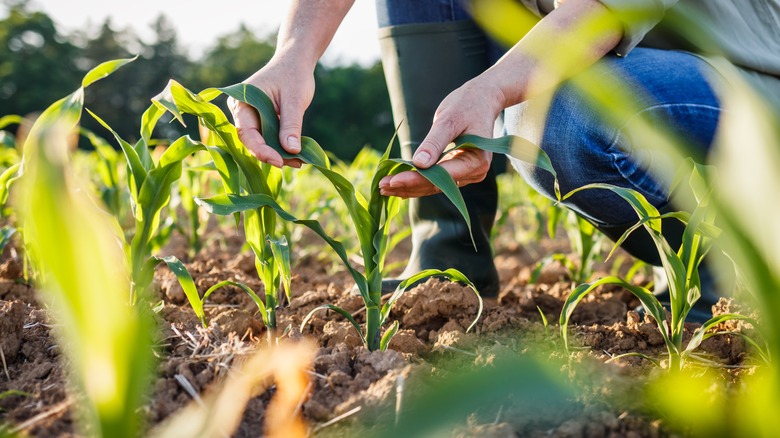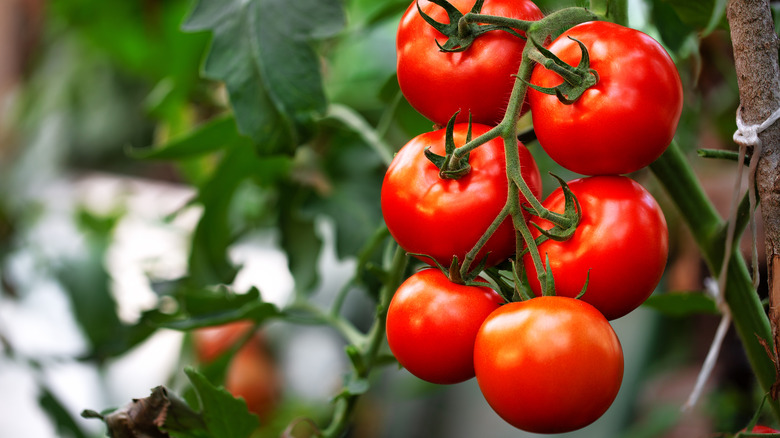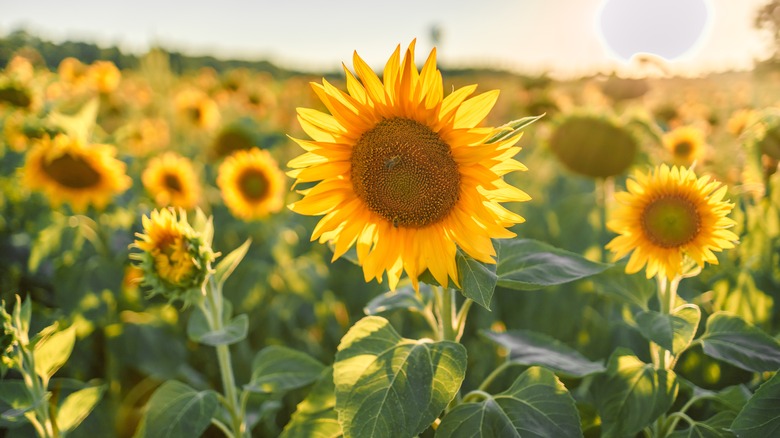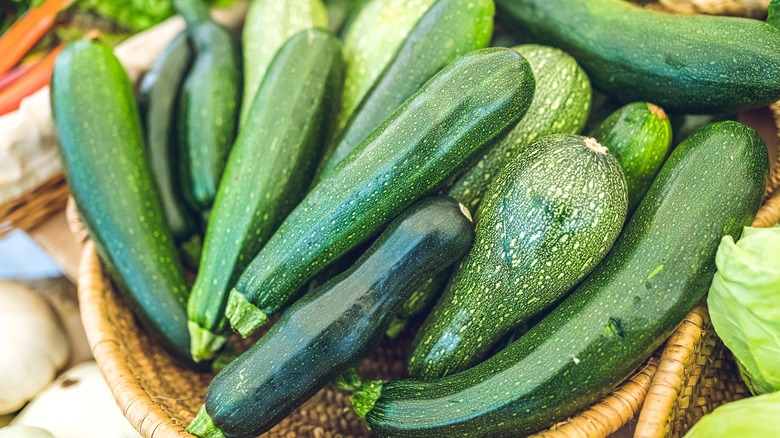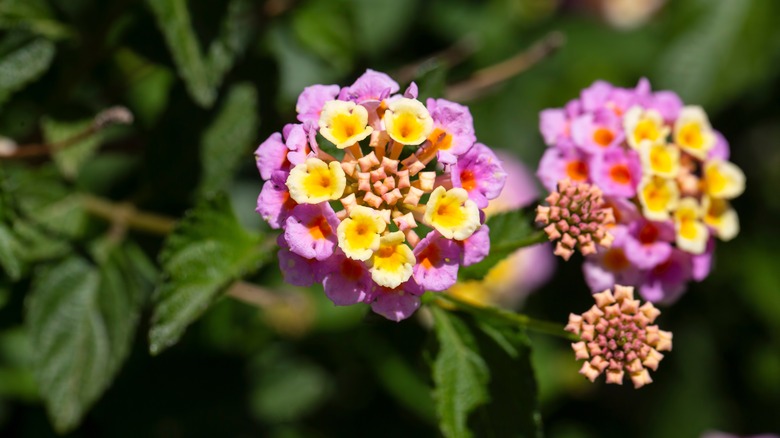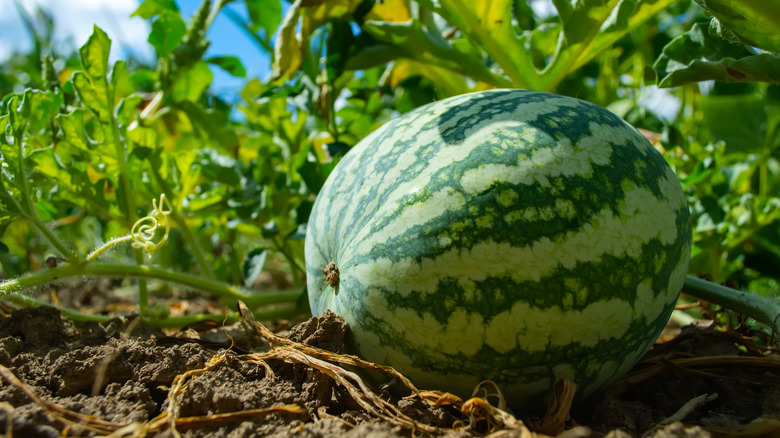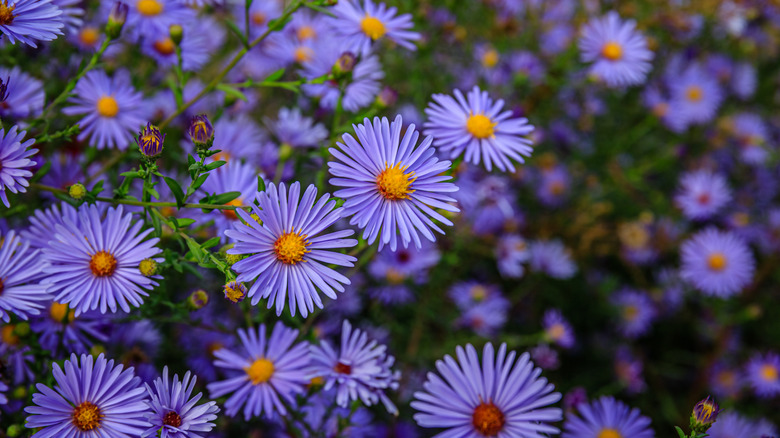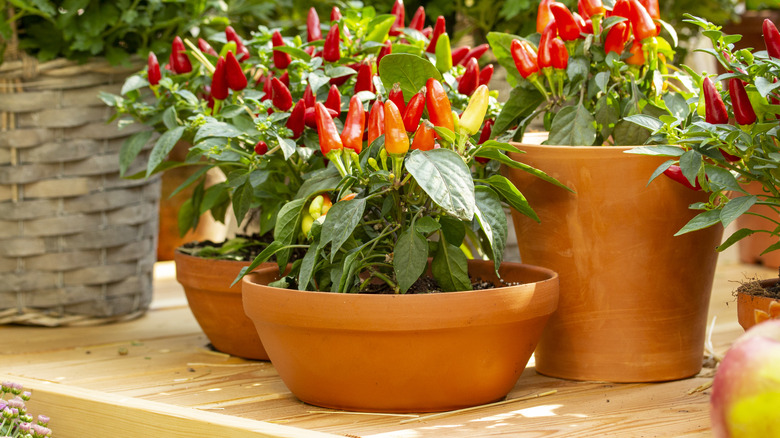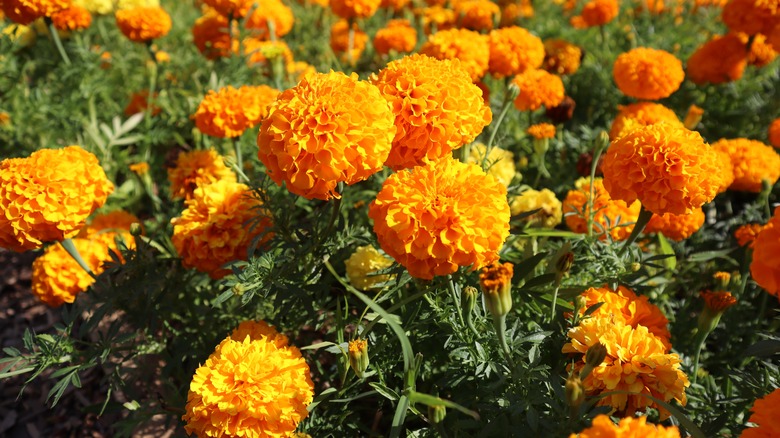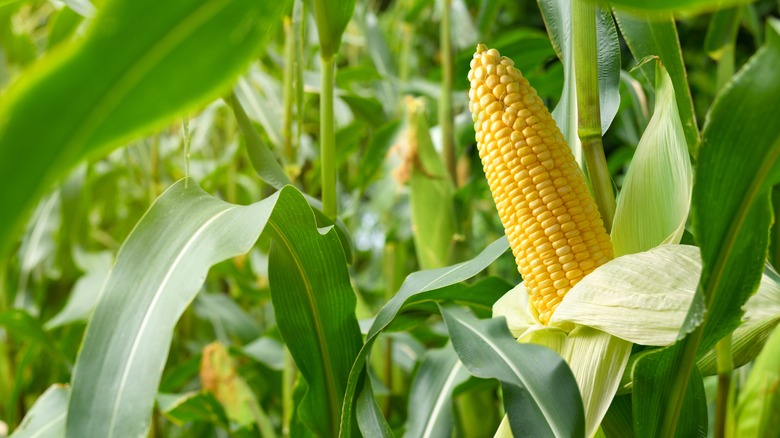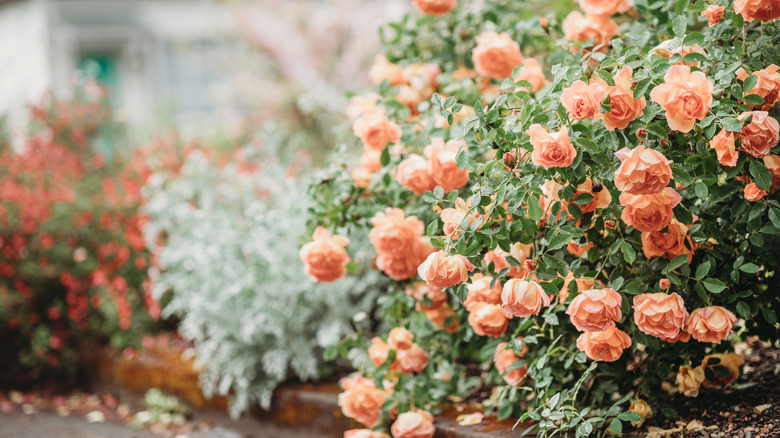Here's What You Should Plant In Your Garden This May
In most places, May sees a huge shift in weather with hotter temperatures and more sunlight. The last frost is gone, and it's a great time to lay out plans for your summer garden. If you're gardening during May, you'll want to choose vegetables and flowers that can handle hot environments and excessive amounts of sunlight. For example, pumpkins are a great choice to plant during the springtime because they'll be ready to pluck by the time you need an adorable jack-o'lantern in the fall.
However, if you want to leave the pumpkin growing to your local cider mill, there are luckily several other types of plants you can introduce to your garden. We've gathered 10 types of greenery that are capable of thriving in late spring and have explained some basic maintenance requirements, as well as what to expect once you've planted them into a healthy bed of soil.
1. Tomatoes
As the last signs of frost disappear, those living in hardiness zones 3-10 can begin planting their choice of tomato into their garden. This will typically be around mid-May, and you'll want to plant them somewhere they'll receive full sun exposure. However, don't let them dry out, as they'll need about 1.5 inches of water per week. After about 60 to 100 days, you'll have beautiful red tomatoes ready to use in the kitchen.
2. Sunflowers
If you'd like a bit of sunshine flowing throughout your garden this fall, then we suggest you start planting your sunflowers by mid to late May. They'll be in full bloom by late August or early September and should be around 4 to 5 feet tall. To keep your sunflowers healthy, it's important to keep the soil moist and filled with organic compost. They'll also require full sun exposure.
3. Zucchini and other varieties of squash
Zucchini and other types of squash, such as crookneck and straightneck squash, can be planted in late May once the soil has warmed up. This type of vegetable thrives in warm conditions, but the soil will need to be kept moist and well-drained. You should expect your zucchini to grow within 45 to 50 days.
4. Lantana
If your garden is in desperate need of some color, then we suggest planting lantana flowers in May, especially for those living in zones 2 to 11. This beautiful flower can endure full sun exposure and a variety of soil types — even sandy areas by the beach! However, be sure to water lantanas often while they're blooming.
5. Watermelon
In need of a fresh summer treat? Grow your own by planting some watermelons. However, it's advised to plant them when temperatures are consistently reaching 75 degrees. Watermelons will also need enough room to spread their vines and plenty of sun exposure. Depending on the variety you select, it could be ready to harvest as early as July.
6. Asters
Asters are beautiful flowers that can be planted in May and withstand the high temperatures that follow in the summer. They can be planted in full or partial sun and require less than an inch of water weekly. Be sure to plant asters in loamy, well-drained soil to prevent root rot or wilted flowers.
7. Peppers
Peppers are another delicious vegetable that you can introduce to your garden in late spring. However, it's advised to start growing them indoors for at least eight weeks before you transplant the growing seeds outdoors. If you want something that matures quickly, we suggest planting jalapeños seeds, which can be ready for consumption within 57 to 65 days.
8. Marigolds
Marigolds are low-maintenance flowers that can flourish if provided full sun exposure in the month of May. This way, you'll have cheerful flowers scattered across your garden throughout the summer. But just be sure to keep them in well-drained soil and remember to maintain a regular watering schedule.
9. Corn
Since the soil temperature is typically higher than 55 degrees by late spring, this makes it the perfect opportunity for those who want to plant corn. This way, you'll have corn available for consumption by end of summer or early fall. If you'd like to plant sweet corn, you should have it planted in the ground by May 31. This type of plant needs plenty of water in order to grow, so be sure to provide at least 5 gallons of water over a square foot of crop.
10. Roses
If you live in the northern areas of the U.S., such as zones 1 through 3, you can easily plant roses in early to mid-May and expect the flowers to put on a romantic display in the summer. It's important to ensure your rose bushes are planted in well-drained soil and somewhere they'll receive about six to eight hours of sunlight per day.
